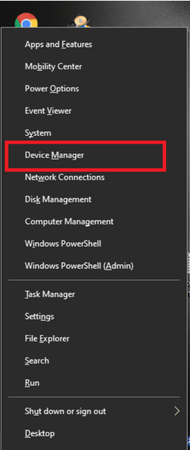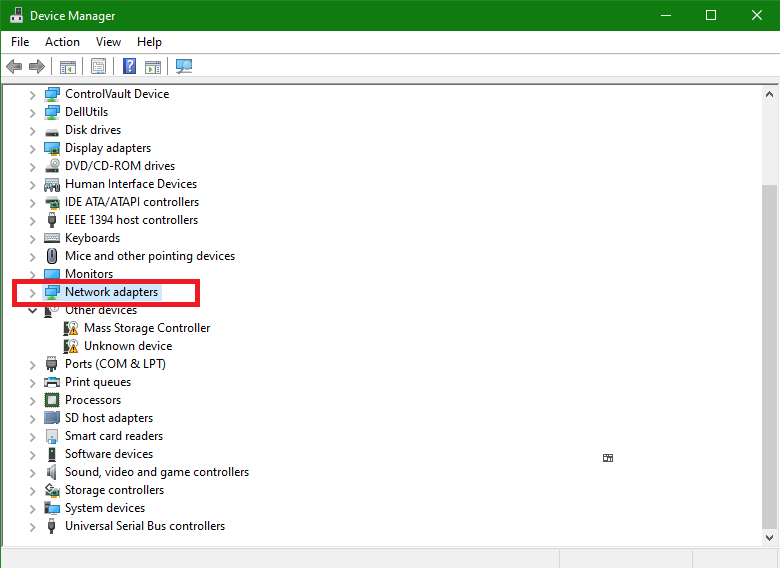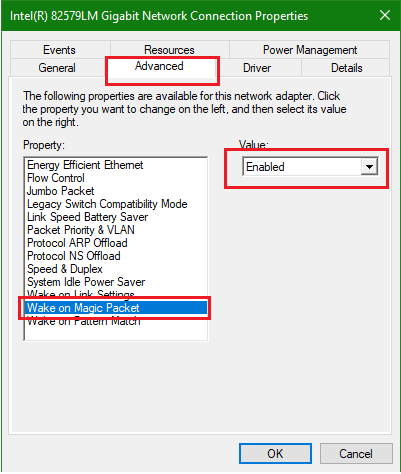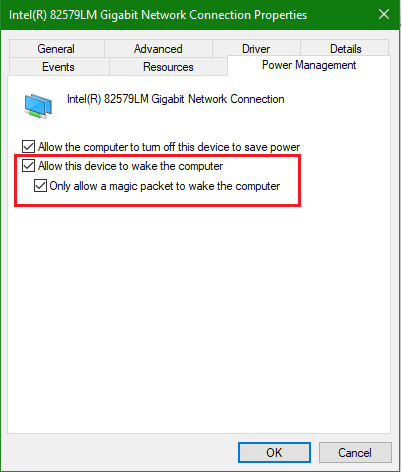As we know, Windows 10 always save our computer’s status before we turn off the computer. I mean, When you open your computer, it runs in the last state, generally. But why some of the computers cannot wake on Lan when the computer is turned off? This article will give you some suggestions on how to wake on LAN in Windows 10 by Microsoft team.

The Wake-on-LAN, or WoL, is a feature on a computer run by Windows 10. The concept is to ‘wake’ your computer from shutting down or in sleep mode through another device granted that all are connected with LAN and even a wireless LAN.
There can be situations that this feature that becomes very useful and so we will be dealing with the procedures on how to set this up on your PC.
Requirements
To activate this feature, you need to ensure that you meet the requirements. These are the following:
- A computer installed with Windows 10, at any edition
- The computer must be connected to the power supply at all times and the switch is not removed
- Although already unnecessary since they are now the standard of today, the motherboard has to be an ATX-compatible type and the LAN card has to be WoL-enabled.
Since it is already a standard feature but needs tinkering, you won’t be having a hard time with it.
Setup Procedures
There can be two ways on how to set up Wake-on-LAN in Windows 10. It can be done through the BIOS settings or done while running on Windows 10.
- Through BIOS settings
Each motherboard brand has different ways to access the BIOS menu and all just have a window of few seconds to enable. Once you figure that out, you can proceed with the Wake-on-LAN settings.
- While turning on the computer, press the key that enables you to enter the BIOS menu.
- From there, find the tab concerning ‘Power’ and look for the entry about Wake-on-LAN.
- Turn it on or enable it. Save and reboot again. This might seem easy but often it can be frustrating if you missed the timing on entering the BIOS. But if you do miss the timing, then you can try the other method.
- Inside Windows 10
This doesn’t need any further skills. You just only have to follow instructions.
- Open the Device Manager by right-clicking on the ‘Start’ button and select the ‘Device Manager’ from the context menu.

- Afterward, you will have to look for the ‘Network adapters’, out of all the hardware detected and listed. Once you find it, expand by clicking the arrow.

- Try to look for your Network Card. If you don’t have any idea what it is and can’t differentiate which among the list that pops out, then try to press the ‘Windows’ key and search for ‘System Information’.
- When it is open, from ‘System Summary’, select ‘Components’, then ‘Network’ and finally ‘Adaptor’. There, you will find the information regarding what Network Card your computer is using.
- After figuring that out, go back to the ‘Device Manager’ window, locate the Network Card’s name under ‘Network adapters’, right-click on it and select the ‘Properties’. Another window will pop out.
- From that window, go to the ‘Advanced’ tab. Keep on scrolling until you find the word ‘Wake on Magic Packet’.

- After selecting it, look at the right side and change its setting into ‘Enabled’.
- Next, choose the ‘Power Management’ tab and add checkmarks on the option ‘Allow this device to wake the computer’ and ‘Only allow a magic packet to wake the computer’.

- Afterwards, click ‘OK’.
Summary: How to wake on LAN in Windows 10?
- The Wake on LAN feature is a useful function that allows you to wake up your computer using the network. The best part about Wake on LAN is that it’s compatible with all modern computers, laptops and tablets. If you want to know how to enable it, we will guide you through the process.
- Turn on the PC in your BIOS.Section: Enable Wake-on-LAN in the Network Adapter Properties in Windows 10.
- Install or update the network card driver.
- Check Wake-on-LAN is enabled in the System Management Bus (SMBus) Controller.
- Download and install Magic Packet software on your local computer.
- Waking on LAN comes in handy when you want to turn on a computer remotely without having to get up from your seat to press the power button.
- We hope that you found this tutorial useful and easy to follow!
Conclusion
Wake-on-LAN works well in situations where remote enabling is needed. However, security precautions must be exercised so that there won’t be any external cyber attacks accessing your computer through the LAN connection.